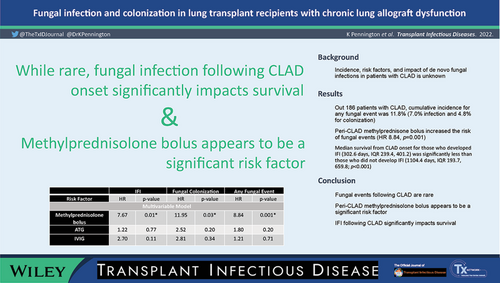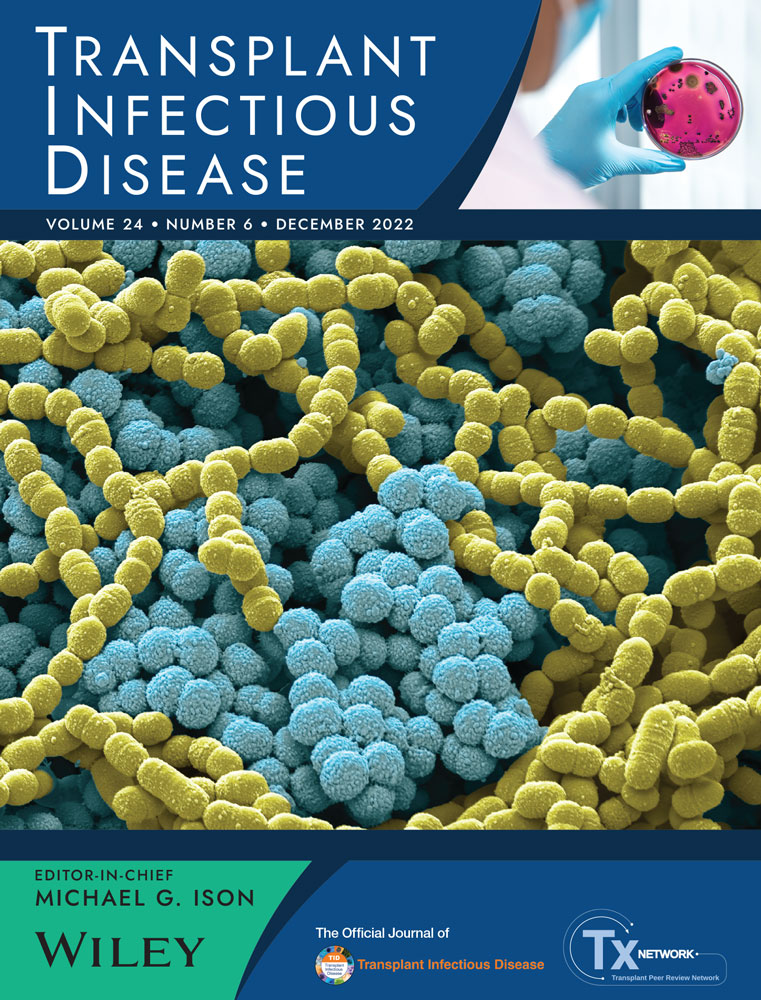Fungal infection and colonization in lung transplant recipients with chronic lung allograft dysfunction
Abstract
Background
The incidence and impact of de novo fungal airway colonization and infection in lung transplant recipients (LTRs) with known chronic lung allograft dysfunction (CLAD) has not been established. We aimed to determine the 1-year cumulative incidence and risk factors of de novo fungal colonization or infection in LTRs with CLAD and assess the impact of colonization or infection on post-CLAD survival.
Methods
Prospectively collected Toronto Lung Transplant Program database and chart review were used for double-LTRs who were diagnosed with CLAD from January 1, 2016 to January 1, 2020 and who were free of airway fungi within 1 year prior to CLAD onset. International Society for Heart and Lung Transplantation definitions were used to define clinical syndromes. Cox-Proportional Hazards Models were used for risk-factor analysis. Survival analysis could not be completed secondary to low number of fungal events; therefore, descriptive statistics were employed for survival outcomes.
Results
We found 186 LTRs diagnosed with CLAD meeting our inclusion criteria. The 1-year cumulative incidence for any fungal event was 11.8% (7.0% for infection and 4.8% for colonization). Aspergillus fumigatus was a causative pathogen in eight of 13 (61.5%) patients with infection and six of nine (66.7%) patients with colonization. No patients with fungal colonization post-CLAD developed fungal infection. Peri-CLAD diagnosis (3 months prior or 1 month after) methylprednisolone bolus (hazards ratio: 8.84, p = .001) increased the risk of fungal events. Most patients diagnosed with fungal infections (53.8%) died within 1-year of CLAD onset.
Conclusion
CONFLICT OF INTEREST
The authors have any conflict of interest to disclose.
Open Research
DATA AVAILABILITY STATEMENT
The data that support the findings of this study are available from the corresponding author upon reasonable request.





